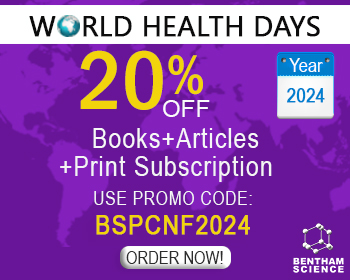Abstract
Background: Diabetes is increasing over time, mainly driven by obesity, aging, and urbanization. Classical macro- and microvascular complications represent the final result of a complex interplay involving atherosclerosis at all stages.
Methods: In this review, we aim at focusing on current updates in the pathophysiology of vascular disease in diabetes and discussing how new therapies might influence the management of these patients at high cardiovascular risk. Diabetes shows accelerated atherosclerosis with a larger inflammatory cell infiltrate, thus favoring the development of heart failure. ‘Diabetic cardiomyopathy’ perfectly describes a specific ischemia- and hypertension- independent entity due to diabetes-related metabolic alterations on myocardial function. Moreover, platelets from subjects with diabetes display a typical hyperreactivity explaining the stronger adhesion, activation, and aggregation. Additionally, diabetes provokes an exaggerated stimulation of the endothelium, with an increased release of reactive oxygen species and a reduced release of nitric oxide, both key elements of the endothelial dysfunction. Also, the coagulation cascade and leukocytes activate contributing to this pro-thrombotic environment. Neutrophils have been recently recognized to play a pivotal role by releasing neutrophil extracellular traps. Finally, microparticles from platelets, neutrophils or monocytes are detrimental effectors on the vessel wall and are involved both in vascular dysfunction and in thrombotic complications.
Conclusion: In light of these findings, the therapeutic management of diabetes needs to be mostly focused on limiting the progression of complications by targeting precise pathophysiological mechanisms rather than the mere glycemic control, which failed to markedly reduce the risk for macrovascular complications and mortality.
Keywords: Diabetes, atherosclerosis, endothelial dysfunction, NETs, platelets, oxidative stress.
[http://dx.doi.org/10.1016/S2213-8587(13)70112-8] [PMID: 24622669]
[http://dx.doi.org/10.1093/eurheartj/eht149] [PMID: 23641007]
[PMID: 29055637]
[http://dx.doi.org/10.1161/CIRCRESAHA.116.306923] [PMID: 27230643]
[http://dx.doi.org/10.1093/eurheartj/ehv134]
[http://dx.doi.org/10.1161/CIRCRESAHA.117.311586] [PMID: 29449364]
[http://dx.doi.org/10.3389/fnins.2018.00591] [PMID: 30210276]
[http://dx.doi.org/10.1161/01.CIR.0000087480.94275.97] [PMID: 14530185]
[http://dx.doi.org/10.1055/s-0033-1343888] [PMID: 23629823]
[http://dx.doi.org/10.1161/01.CIR.0000091257.27563.32] [PMID: 14504252]
[http://dx.doi.org/10.1161/CIRCRESAHA.110.223545] [PMID: 21030723]
[http://dx.doi.org/10.1186/s12933-016-0369-6] [PMID: 27013319]
[http://dx.doi.org/10.1111/j.1476-5381.2011.01276.x] [PMID: 21323907]
[http://dx.doi.org/10.1161/CIRCRESAHA.110.217117] [PMID: 20431074]
[http://dx.doi.org/10.1152/ajpendo.00108.2011] [PMID: 21712532]
[http://dx.doi.org/10.1161/ATVBAHA.107.156059] [PMID: 18162611]
[http://dx.doi.org/10.1073/pnas.0609656104] [PMID: 17360381]
[http://dx.doi.org/10.1139/Y08-033] [PMID: 18516100]
[http://dx.doi.org/10.3390/ijms18010188] [PMID: 28106778]
[http://dx.doi.org/10.1007/s00125-010-1677-0] [PMID: 20186387]
[http://dx.doi.org/10.1093/eurheartj/eht402] [PMID: 24126878]
[http://dx.doi.org/10.1038/s41598-018-33014-9] [PMID: 30279491]
[http://dx.doi.org/10.1016/j.pharmthera.2016.11.013] [PMID: 27916650]
[http://dx.doi.org/10.1016/j.cardiores.2006.07.018] [PMID: 16970929]
[http://dx.doi.org/10.1007/s00125-005-0005-6] [PMID: 16283236]
[http://dx.doi.org/10.1016/j.mvr.2014.06.010] [PMID: 24984291]
[http://dx.doi.org/10.1186/s12933-018-0763-3] [PMID: 30170601]
[http://dx.doi.org/10.1186/s12933-016-0353-1] [PMID: 26892461]
[http://dx.doi.org/10.1016/j.ijcard.2018.04.028] [PMID: 29685689]
[http://dx.doi.org/10.1111/eci.13001] [PMID: 30011059]
[http://dx.doi.org/10.1055/s-0037-1613694] [PMID: 29294493]
[http://dx.doi.org/10.1160/TH17-09-0630] [PMID: 29304522]
[http://dx.doi.org/10.1160/TH08-12-0796] [PMID: 27173919]
[http://dx.doi.org/10.1111/j.1365-2362.1990.tb02264.x] [PMID: 2112481]
[http://dx.doi.org/10.1161/hc4801.100029] [PMID: 11733392]
[http://dx.doi.org/10.2174/138161212803251916] [PMID: 22724415]
[http://dx.doi.org/10.1007/s40256-015-0113-8] [PMID: 25782437]
[http://dx.doi.org/10.1161/01.CIR.0000069272.06194.91] [PMID: 12695287]
[http://dx.doi.org/10.1182/blood-2004-03-0926] [PMID: 15130939]
[http://dx.doi.org/10.1172/JCI81660] [PMID: 26551681]
[http://dx.doi.org/10.1182/blood-2016-04-710632] [PMID: 27574188]
[http://dx.doi.org/10.1161/01.HYP.28.2.209] [PMID: 8707383]
[http://dx.doi.org/10.1074/jbc.M305474200] [PMID: 14602724]
[http://dx.doi.org/10.1056/NEJMra071014] [PMID: 18077812]
[http://dx.doi.org/10.1080/09537100600819115] [PMID: 17365861]
[http://dx.doi.org/10.1016/j.thromres.2011.11.052] [PMID: 22197180]
[http://dx.doi.org/10.1016/S0735-1097(01)01555-8] [PMID: 11691500]
[http://dx.doi.org/10.1161/CIRCULATIONAHA.114.013774] [PMID: 25681464]
[http://dx.doi.org/10.1038/nm1667] [PMID: 17982464]
[http://dx.doi.org/10.1186/1475-2840-11-152] [PMID: 23249721]
[http://dx.doi.org/10.1152/japplphysiol.00995.2015] [PMID: 27687564]
[http://dx.doi.org/10.1080/09537100600760814] [PMID: 17127486]
[http://dx.doi.org/10.1152/ajpendo.00718.2006] [PMID: 17426109]
[http://dx.doi.org/10.3389/fphar.2017.00363] [PMID: 28659798]
[http://dx.doi.org/10.1016/j.thromres.2007.03.002] [PMID: 17445870]
[http://dx.doi.org/10.1007/s00592-014-0676-x] [PMID: 25387570]
[http://dx.doi.org/10.1016/j.febslet.2013.05.053] [PMID: 23735697]
[http://dx.doi.org/10.1038/nm.3887] [PMID: 26076037]
[http://dx.doi.org/10.2337/db15-0863] [PMID: 26740598]
[http://dx.doi.org/10.1111/imm.12437] [PMID: 25545227]
[http://dx.doi.org/10.1161/ATVBAHA.114.304114] [PMID: 25012129]
[http://dx.doi.org/10.1093/eurheartj/ehv044] [PMID: 25755115]
[http://dx.doi.org/10.1152/ajpendo.00026.2011] [PMID: 21505143]
[http://dx.doi.org/10.1002/cyto.b.20528] [PMID: 20544836]
[http://dx.doi.org/10.1111/j.1751-7176.2012.00631.x] [PMID: 22747618]
[http://dx.doi.org/10.1016/j.atherosclerosis.2009.06.037] [PMID: 19674745]
[http://dx.doi.org/10.1016/j.atherosclerosis.2007.07.012] [PMID: 17720166]
[http://dx.doi.org/10.1016/j.jacc.2005.02.047] [PMID: 15893178]
[http://dx.doi.org/10.1160/TH16-11-0837] [PMID: 28424820]
[PMID: 30334371]
[http://dx.doi.org/10.1186/s12933-016-0367-8] [PMID: 27005938]
[http://dx.doi.org/10.1681/ASN.2018040368] [PMID: 30341150]
[http://dx.doi.org/10.1016/j.thromres.2017.06.003] [PMID: 28624718]
[http://dx.doi.org/10.1016/j.atherosclerosis.2008.10.039] [PMID: 19091315]
[http://dx.doi.org/10.5114/aoms.2016.59926] [PMID: 27279844]
[http://dx.doi.org/10.1016/j.cjca.2016.02.052]
[http://dx.doi.org/10.1042/BSR20160430] [PMID: 27913753]
[http://dx.doi.org/10.1002/jcp.22744] [PMID: 21437907]
[http://dx.doi.org/10.1161/ATVBAHA.112.248773] [PMID: 22492089]
[http://dx.doi.org/10.2337/db08-1524] [PMID: 20009085]
[http://dx.doi.org/10.1016/j.vph.2012.05.005] [PMID: 22609133]
[PMID: 30115599]
[http://dx.doi.org/10.2337/db08-0063] [PMID: 18299315]
[http://dx.doi.org/10.1152/ajpendo.2001.281.5.E924] [PMID: 11595647]
[http://dx.doi.org/10.1007/s001250051279] [PMID: 10447524]
[http://dx.doi.org/10.1038/414813a] [PMID: 11742414]
[http://dx.doi.org/10.1016/j.atherosclerosis.2005.03.015] [PMID: 16285992]
[http://dx.doi.org/10.1371/journal.pone.0123169] [PMID: 25879533]
[http://dx.doi.org/10.2337/diabetes.52.11.2795] [PMID: 14578299]
[http://dx.doi.org/10.1177/1479164117698917] [PMID: 28301953]
[http://dx.doi.org/10.1007/s12020-016-0867-z] [PMID: 26860515]
[http://dx.doi.org/10.2337/db17-0294] [PMID: 28634176]
[http://dx.doi.org/10.1136/bmj.321.7258.405] [PMID: 10938048]
[http://dx.doi.org/10.1001/jama.295.14.1681] [PMID: 16609090]
[http://dx.doi.org/10.1016/j.numecd.2017.07.004] [PMID: 28969883]
[http://dx.doi.org/10.2337/dc06-0293] [PMID: 16801566]
[http://dx.doi.org/10.2337/db07-1618] [PMID: 18223010]
[http://dx.doi.org/10.2337/dc08-1671] [PMID: 19246588]
[http://dx.doi.org/10.2337/dc15-1188] [PMID: 26604281]
[http://dx.doi.org/10.1186/s12933-015-0275-3] [PMID: 26289581]
[http://dx.doi.org/10.1007/s00125-009-1574-6] [PMID: 19890623]
[http://dx.doi.org/10.1056/NEJMoa0802987] [PMID: 18539916]
[http://dx.doi.org/10.2337/db12-0224] [PMID: 22891214]
[http://dx.doi.org/10.1056/NEJMoa1608664] [PMID: 28402770]
[http://dx.doi.org/10.1093/eurheartj/ehy339] [PMID: 30165516]
[http://dx.doi.org/10.1056/NEJMoa1001286] [PMID: 20228401]
[http://dx.doi.org/10.1016/S0140-6736(98)04311-6] [PMID: 9635947]
[http://dx.doi.org/10.1097/HJH.0000000000001276] [PMID: 28141660]
[http://dx.doi.org/10.1136/bmj.i717] [PMID: 26920333]
[http://dx.doi.org/10.1111/j.1524-6175.2004.03216.x] [PMID: 15010644]
[http://dx.doi.org/10.1371/journal.pmed.1001971] [PMID: 26954482]
[http://dx.doi.org/10.1016/j.jacc.2010.02.046] [PMID: 20620720]
[http://dx.doi.org/10.1093/eurheartj/ehw132] [PMID: 27130705]
[http://dx.doi.org/10.1016/S0140-6736(04)16895-5] [PMID: 15325833]
[http://dx.doi.org/10.2337/dc05-2465] [PMID: 16731999]
[http://dx.doi.org/10.1016/S0140-6736(08)60104-X]
[http://dx.doi.org/10.1056/NEJMoa1410489] [PMID: 26039521]
[http://dx.doi.org/10.1161/CIRCULATIONAHA.117.030950] [PMID: 29263150]
[http://dx.doi.org/10.3803/EnM.2018.33.2.219] [PMID: 29766679]
[http://dx.doi.org/10.1186/s12916-015-0358-8] [PMID: 26099511]
[http://dx.doi.org/10.1111/dom.13384] [PMID: 29802688]
[http://dx.doi.org/10.1002/clc.23049] [PMID: 30120772]
[http://dx.doi.org/10.1016/S2213-8587(17)30313-3] [PMID: 28927706]
[http://dx.doi.org/10.1056/NEJMoa0706628] [PMID: 17984165]
[http://dx.doi.org/10.1056/NEJMoa1206797] [PMID: 23126252]
[http://dx.doi.org/10.1056/NEJMoa1609581] [PMID: 28514624]
[http://dx.doi.org/10.1056/NEJMoa1706444] [PMID: 28847206]
[http://dx.doi.org/10.2337/dci17-0057] [PMID: 29263194]
[http://dx.doi.org/10.1056/NEJMoa1307684] [PMID: 23992601]
[http://dx.doi.org/10.1056/NEJMoa1305889] [PMID: 23992602]
[http://dx.doi.org/10.1056/NEJMoa1501352] [PMID: 26052984]
[http://dx.doi.org/10.1056/NEJMoa1603827] [PMID: 27295427]
[http://dx.doi.org/10.1056/NEJMoa1607141] [PMID: 27633186]
[http://dx.doi.org/10.1056/NEJMoa1504720] [PMID: 26378978]
[http://dx.doi.org/10.1056/NEJMoa1611925] [PMID: 28605608]
[http://dx.doi.org/10.1056/NEJMoa1509225] [PMID: 26630143]
[http://dx.doi.org/10.1056/NEJMoa1612917] [PMID: 28910237]
[http://dx.doi.org/10.1136/bmj.a1840] [PMID: 18927173]
[http://dx.doi.org/10.1001/jama.2008.623] [PMID: 18997198]
[http://dx.doi.org/10.2337/diacare.26.12.3264] [PMID: 14633812]
[http://dx.doi.org/10.1161/CIRCULATIONAHA.116.025760] [PMID: 27881565]
[http://dx.doi.org/10.1056/NEJMoa1804988] [PMID: 30146931]
[http://dx.doi.org/10.1056/NEJMoa1804988] [PMID: 30146931]
[http://dx.doi.org/10.1161/CIRCINTERVENTIONS.110.960187] [PMID: 21386092]
[http://dx.doi.org/10.1111/dme.12828] [PMID: 26043186]
[http://dx.doi.org/10.1136/bmj.326.7380.82] [PMID: 12521973]
[http://dx.doi.org/10.1016/S0167-5273(02)00195-X] [PMID: 12243846]
[http://dx.doi.org/10.1186/1745-6215-8-21] [PMID: 17725825]
[http://dx.doi.org/10.1016/S0140-6736(18)31133-4] [PMID: 30017552]
[http://dx.doi.org/10.1056/NEJMoa050613] [PMID: 15753114]
[http://dx.doi.org/10.1161/CIRCULATIONAHA.117.028321] [PMID: 28947478]
[http://dx.doi.org/10.1136/bmj.321.7270.1183] [PMID: 11073508]
[http://dx.doi.org/10.1016/S2468-1253(18)30037-2] [PMID: 29475806]
[http://dx.doi.org/10.1016/j.cjca.2017.06.001] [PMID: 28754388]
[http://dx.doi.org/10.1161/CIRCRESAHA.116.308445] [PMID: 27418629]
[http://dx.doi.org/10.1111/dom.12041] [PMID: 23167274]
[http://dx.doi.org/10.1007/s00592-018-1129-8] [PMID: 29546579]
[http://dx.doi.org/10.1186/s12933-017-0551-5] [PMID: 28532406]
[http://dx.doi.org/10.1016/S0026-0495(00)91039-4] [PMID: 10690935]
[http://dx.doi.org/10.1161/01.HYP.25.4.779] [PMID: 7721432]
[http://dx.doi.org/10.2337/diab.46.5.742] [PMID: 9133539]
[http://dx.doi.org/10.2337/dc08-0561] [PMID: 18556339]
[http://dx.doi.org/10.1016/j.jacc.2008.10.038] [PMID: 19179212]
[http://dx.doi.org/10.1161/01.CIR.0000116762.77804.FC] [PMID: 14757687]
[http://dx.doi.org/10.1093/bja/aei220] [PMID: 16100235]
[http://dx.doi.org/10.1111/j.1399-6576.2006.01100.x] [PMID: 16923091]
[http://dx.doi.org/10.1016/S0008-6363(96)00263-5] [PMID: 9217897]
[http://dx.doi.org/10.1161/01.CIR.98.21.2227] [PMID: 9867443]
[http://dx.doi.org/10.1093/eurheartj/ehx143] [PMID: 28387815]
[http://dx.doi.org/10.2174/0929867324666170303123734] [PMID: 28260498]
[http://dx.doi.org/10.1089/ars.2014.6054] [PMID: 25490141]
[http://dx.doi.org/10.1161/JAHA.118.008953] [PMID: 29934421]
[http://dx.doi.org/10.1016/j.jacl.2018.02.004] [PMID: 29544724]
[http://dx.doi.org/10.1177/1479164113481817] [PMID: 23673376]
[http://dx.doi.org/10.1016/j.peptides.2013.12.015] [PMID: 24418070]
[http://dx.doi.org/10.1016/j.bbadis.2018.05.012] [PMID: 29778663]
[http://dx.doi.org/10.1210/jc.2014-2291] [PMID: 25393640]
[http://dx.doi.org/10.1186/s12933-018-0749-1] [PMID: 30049285]
[http://dx.doi.org/10.1016/j.atherosclerosis.2018.02.028] [PMID: 29518749]
[http://dx.doi.org/10.1186/s12933-017-0658-8] [PMID: 29301516]
[http://dx.doi.org/10.1093/cvr/cvx186] [PMID: 29016744]
[http://dx.doi.org/10.1016/S2213-8587(18)30234-1] [PMID: 30224284]
[http://dx.doi.org/10.1016/j.diabres.2018.09.017] [PMID: 30273707]
[http://dx.doi.org/10.1182/blood-2014-07-587709] [PMID: 25624317]
[http://dx.doi.org/10.1038/sj.jhh.1002100] [PMID: 17051237]
[http://dx.doi.org/10.1038/sj.jhh.1001863] [PMID: 15829999]
[http://dx.doi.org/10.1111/j.1538-7836.2005.01403.x] [PMID: 15946206]
[http://dx.doi.org/10.1016/j.bbrc.2004.05.127] [PMID: 15207698]
[http://dx.doi.org/10.1056/NEJMoa1707914] [PMID: 28845751]
[http://dx.doi.org/10.1016/j.jacc.2018.03.002] [PMID: 29544870]
[http://dx.doi.org/10.1016/j.jacc.2018.03.480] [PMID: 29793628]
[http://dx.doi.org/10.2337/dc18-S009] [PMID: 29222380]
[http://dx.doi.org/10.1038/s41569-018-0049-1] [PMID: 29973709]



























